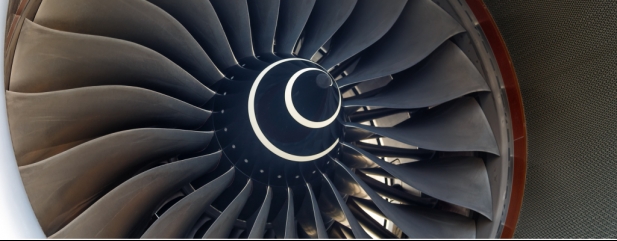Archived article
Please note that tax, investment, pension and ISA rules can change and the information and any views contained in this article may now be inaccurate.
Rolls-Royce could come roaring back once activity resumes

Shares in Rolls-Royce (RR.) have been on a hyper-volatile rollercoaster run during the past couple of months. Investors seldom get to see the share price of a FTSE 100 company almost double in value in the space of a few days, as happened with Rolls-Royce in early October, and jump another 50% at the beginning of this month.
With multiple Covid-19 vaccines showing promising trial data, there at last seems to be a path out of this horrible pandemic, albeit a long one still fraught with risks.
Analysts are bit by bit rethinking their forecasts for UK aero-engineer Rolls-Royce as 2021 brings the promise of people being able to move far more freely around the globe as restrictions are gradually removed.
‘We believe air traffic will recover quickly, likely in the second half of 2021,’ said Jefferies’ analysts Sandy Morris and Hamish Dalgarno in a note to clients earlier this month.
‘Chinese domestic airline traffic fully recovered in seven months. In Europe, Japan and the USA, the rally in June and July was snuffed out by Covid, but the portent is recovery could be swift. After such prolonged and severe disruption, we believe international and business travel would not lag far behind.’
Jefferies is among the small number of analysts with a buy rating on the stock ahead of what they think could be another run up in the share price over the coming months, perhaps up to 140p, nearly a third up from the 107p trading level at the time of writing.
But positive views on the stock within the analyst community are still in the minority, based on Refinitiv data, emphasising the considerable risks still facing Rolls-Royce.
We back the optimists and believe there is considerable scope for share price gains through 2021. But perhaps more importantly, on a medium-term three to five-year investment period, Shares thinks that the stock could nearly double again, based on a cash flow yield of 7% and free cash flow of £1 billion. That would imply a company value beyond £14 billion compared to the current £8.9 billion market cap.
WHY WE ARE OPTIMISTIC
In October shareholders overwhelmingly backed a £2 billion rights issue, shoring up the company’s balance sheet. The rights issue entitled shareholders to buy 10 new shares at 32p per share for every three they owned, quadrupling the number of shares on the market, from around 1.9 billion to 8.4 billion, on 13 November.
The obvious downside of this situation is that recovering earnings will get spread across many more shares than before, diluting the impact for investors. For example, if Rolls-Royce’s profits recovered to its pre-pandemic levels, its earnings would be divided among more shares, so earnings per share (EPS) would be lower.
However, Rolls-Royce has also unlocked another £3 billion or so of extra borrowing capacity. About £2 billion of that additional liquidity came from new bonds prior to the rights issue in October, the rest from a two-year bank loan.
With around £5 billion in extra funding available analysts now largely believe that Rolls-Royce has escaped the existential threat that it faced earlier in the year, with access to enough cash to see it through the pandemic.
So as the cash call dust starts to settle, we believe Rolls-Royce’s shares are likely to be far less volatile in the coming months than they were through most of 2020. That might be bad news for high-risk day traders, but it would be great for more traditional investors willing to back a business for the medium to longer-term.
Changing the mindset of ordinary investors is important. Far fewer would be willing to invest in a stock when it is jumping about all over the place, up by double-digit percentage points one day, plunging by amounts just as big the next day, possibly triggering stop-loss safety nets on little more than a change in the market’s mood music.
With improved stock stability investors will have the freedom to take a more considered view on the company’s prospects over the coming months and years.
That gives the company and its investors breathing space to concentrate on its core end markets, civil aerospace, power systems, defence and its low-pressure turbines unit ITP Aero, although rumours continue that the latter business could be sold.
Rolls-Royce engines power 35 types of commercial aircraft that have clocked up more than 100 million air miles, including the Airbus A330, A340, A350, and A380, plus the Boeing 777 and 787 Dreamliner.
13,000: the number of Rolls-Royce commercial aircraft engines in service around the world.
An estimated 6 billion people will be flying annually by 2030, according
to Rolls-Royce.
Rolls-Royce is developing electric aircraft engines alongside German research partner Siemens.
Source: Rolls-Royce
GROWTH & PROFIT
Aero engines, both commercial and defence, make up three quarters of its revenue and Rolls-Royce had grown to become the senior player in an effective global duopoly, nudging ahead of rival General Electric in civil aviation. This area is worth more than half of its total sales.
While this is a highly technical and cutting-edge science-based business, the model is easy to understand. It builds engines, often selling them at cost, and then enjoys substantial profit over the typical 25-year engine lifecycle from servicing and maintenance.
Get more engines on more planes that fly more air miles and you’ve got a virtuous cycle of bumper cash flow long into the future. That cash should then underpin a growing stream of dividends.
With thousands of planes grounded for part of 2020 and air travel still running at a fraction of previous levels, it’s obvious that this part of the business has suffered badly.
Civil aerospace operations plunged £1.8 billion into the red in the first half of 2020, having posted a £2.5 billion profit in 2019’s first half.
 Getting planes back in the sky is paramount for Roll-Royce. But even if Covid restrictions are lifted completely through 2021, there is no guarantee that people will want to fly in the same numbers right away.
Getting planes back in the sky is paramount for Roll-Royce. But even if Covid restrictions are lifted completely through 2021, there is no guarantee that people will want to fly in the same numbers right away.
Business air travel may remain lower for longer as more meetings are done virtually on Microsoft Teams, Zoom or other platforms. This likely means that any sort of normality won’t likely return to global air travel until 2022.
But as the table shows, Rolls-Royce’s civil aerospace operations may be big for sales, but it is not the company’s main driver of profit, as that lies in the power systems and defence units.
The power systems unit, which includes Rolls-Royce’ nuclear power solutions, also saw disruption during the first half thanks to the pandemic, wiping out a significant chunk of profit at the interim stage.
At the time, in August, the company talked up the unit’s strong positioning and scope to benefit from the ‘recovery and from continued demand for mission critical power’, which may imply a much improved second half of the year and beyond.
The defence division remained resilient, posting 35% growth in revenue and 33% higher operating profit at the half-year stage.
TRICKY VALUATION
Near-term price to earnings (PE) multiples are meaningless given the modest profit recovery expected by analysts in 2021. Forecasts from Jefferies of 12.4p EPS for 2022 are based on the old 1.9 billion share count. Adjusting for the flood of new shares, we calculate 2022 EPS at 2.9p, implying a PE of about 37.
This looks expensive but it is arguable that PE is not to right way to value the business given the ongoing uncertainty around future earnings and their pace of recovery.
Cash flow is a better way to value the business. Rolls-Royce chief executive Warren East is targeting annual free cash flow of at least £750 million in 2022. That implies free cash flow of about 9p per share.
A 107p share price implies a free cash flow yield of 8.4%, or 11.2% on the £1 billion free cash flow that Jefferies estimates for 2023.
To Shares this looks like great value even considering the extended timeframe for operating returns and ongoing risks. Free cash flow in 2019 was £1.55 billion.
Rolls-Royce is a valuable franchise and its business model is highly scalable. It now has financial security and a much clearer pathway to recovery, and we believe the stock could come roaring back to life just as soon as normal economic activity resumes.
Important information:
These articles are provided by Shares magazine which is published by AJ Bell Media, a part of AJ Bell. Shares is not written by AJ Bell.
Shares is provided for your general information and use and is not a personal recommendation to invest. It is not intended to be relied upon by you in making or not making any investment decisions. The investments referred to in these articles will not be suitable for all investors. If in doubt please seek appropriate independent financial advice.
Investors acting on the information in these articles do so at their own risk and AJ Bell Media and its staff do not accept liability for losses suffered by investors as a result of their investment decisions.
Issue contents
Editor's View
Feature
First-time Investor
Great Ideas
- Boston Scientific has big potential to get back on top in 2021
- Buy this trust to access cut-price quality names
- Take advantage of share price pullback to buy more Softcat stock
- Strong trading could lead to more generous dividends for Somero
- Reasons to be more optimistic on AG Barr
- Odyssean Investment Trust sails in with swift 17.4% return
Investment Trusts
Money Matters
News
- Sunak pledges increased spending on jobs, housing and infrastructure
- Germany’s blue-chip index gets big overhaul after Wirecard scandal
- Controversial fast-track funding rule scrapped
- Blue Prism eyes US listing to help narrow valuation gap
- Worst of dividend cuts ‘now over’ says Janus Henderson
- Video game platform Roblox could see blockbuster market debut
- Mute reaction to AstraZeneca vaccine is no reason to lose optimism
- UK ‘green revolution’ could be great for investors

 magazine
magazine








